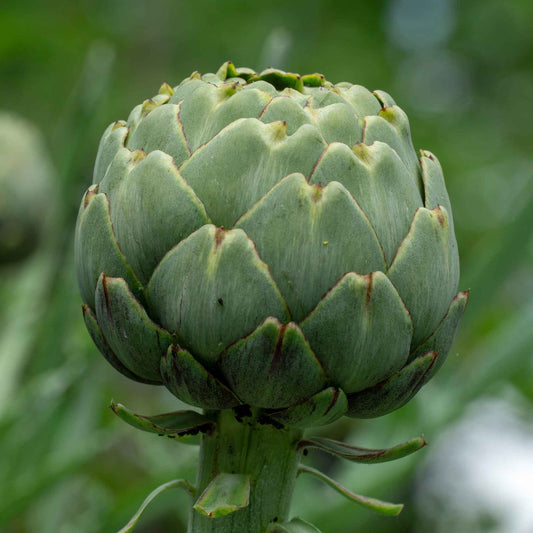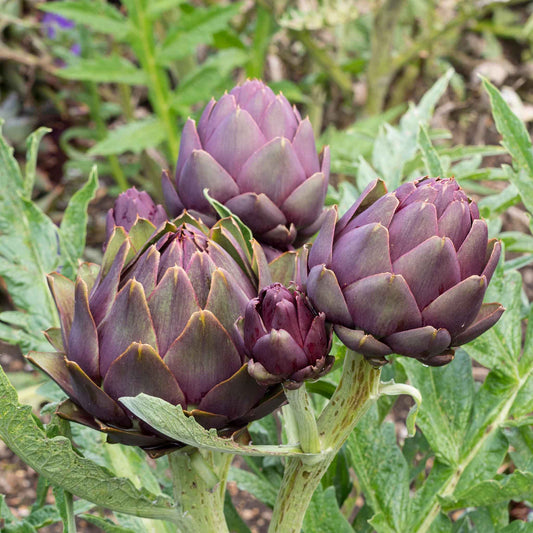-
main-collection-product-grid

Artichoke Seeds - Green Globe
Tender perennial best harvested when youngArtichoke Seeds - Green Globe
Tender perennial best harvested when youngRegular price As Low As $6.99Regular priceUnit price per -
main-collection-product-grid

Artichoke Seeds - Violet de Provence
Early producer with fleshy, tender leavesArtichoke Seeds - Violet de Provence
Early producer with fleshy, tender leavesRegular price As Low As $5.99Regular priceUnit price per
Growing heirloom artichokes in your garden
- Winter hardy in zones 7 through 11
- Deeply serrated leaves and thistle-like flowers
- A nice companion plant for asparagus
- Tender perennial
Heirloom artichokes, which are native to the Mediterranean region, have a long and rich history. They were improved by the Arabs, farmed by the ancient Greeks and Romans, and produced in Henry VIII's garden at Newhall before being brought to the Americas by French and Spanish immigrants in the 19th century. Artichokes are the immature flower buds before the flowers bloom, and they used to be so expensive that only monarchs could purchase them. Today, this delicacy is now easily grown and enjoyed from seed by home gardeners all over. We offer a variety of heirloom artichoke seeds, ranging from the typical heirloom Green Globe to more exotic heirloom variations such as Purple Italian Globe and Violet. Artichokes, to let you produce this delicacy in your very own yard. Plan ahead of time because artichokes demand a lot of space and a long growth season. Artichokes can be grown as perennials in zones seven to eleven, but they must be grown as annuals in colder zones.
Choose an area with good drainage and plenty of sunlight if you want to produce heirloom artichokes. Because artichokes are often killed by wet soil, it's critical to choose your growing site carefully. Cabbage, sunflowers, and peas are all good artichoke companions. These plants will not compete with artichokes for nitrogen in the soil, which artichokes are known for consuming. When it comes to soil, a well-worked, nutrient-rich mix will keep your artichokes happy, healthy, and thriving. If needed, you can improve your soil by using organic compost to offer correct soil nutrients. Make sure that the soil is evenly hydrated. Heirloom artichoke seeds should be planted half an inch deep and spaced six feet apart. Cut plants back to ten inches and cover with a box in colder climates, mulching with straw or leaves to help keep a steady soil temperature. Heirloom artichokes bear their best in the second year, and new plants can be grown every three to four years.
For more information on planting, growing, and caring for heirloom artichoke seeds, see the Artichoke Seeds Planting Guide.

